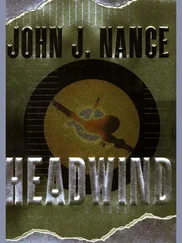But fight for what? To prove he’d been right that night? Or just to beg license to consider himself a decent, if deeply flawed, human.
As the image of the 757 cockpit coalesced again around him, Marty took a deep breath and submerged once more into the prison of his personal memory.
Seven Months before — January 21 st
Regal 12
The temptation to accelerate the process and get the stricken 757 on the ground had grown to an internal imperative as primal as the human need to run from a monster. Marty recognized the syndrome. That form of “get-home-itis” had killed better airmen than him.
The controls had been given over to Ryan so Marty could force himself to think clearly and as free of panic as possible. It was a logical idea, but it wasn’t working. His thoughts — propelled by the cascading urgency of everything real and imagined — were a confused cacophony clamoring for attention like a classroom of agitated 3 rdgraders.
I’ve done the final briefing with Ryan, but he has to back me up on the spoilers… wait, remember, there won’t be any! Okay, reverse thrust is going to be our only friend after the brakes, and the braking factor down there is poor in the last report. Do I need to make another PA to the passengers? No… Nancy and the crew have it under control.
The very real monster, he understood, was the dropoff at the end of Runway 7, and it was time he faced it. The numbers and the graphs were not subjective. There was no flexibility in the cold hard prediction that there wasn’t enough slippery runway in a blizzard for a big jet traveling a hundred knots faster than normal. Even if he slammed the 757 on right at the beginning of Runway 7, 230 knots of momentum was a huge amount of extra energy to dissipate, and the only tools he would have probably weren’t enough — especially if the tires blew or the brakes were more ineffective than figured. What then?
If I can’t stop her, should I run off the left side of the runway onto the taxiway? There’s a drop there, too, alongside, but maybe it wouldn’t be that lethal.
Face it, he told himself, everything was stacked against them if he didn’t reduce his approach speed significantly under 230 knots. He’d known it for the last forty minutes and been doing everything possible to treat the reality like the iconic three monkeys refusing to perceive evil. But there was a brutal binary choice, and it was as unyielding as granite: Slow down and make a safe landing and in the process sacrifice those people on the wing that were only there because of his mistake; or, stay at 230 knots to touchdown to save the occupants of Mountaineer while rolling the dice that skidding off the end of Runway 7 and down the slope at the eastern end would not seriously injure anyone.
After nearly losing the Beech 1900 fuselage in his experimentation with a slower airspeed, there was no longer any doubt that lower airspeed meant certain death for the occupants of Mountaineer 2612. It wasn’t a gamble, it was a certainty.
Railing against the siren in his soul that screamed that there had to be another way, Marty locked down his decision: If it was a contest between certain death on one hand and a chance of everyone coming through on the other, he’d take the chance.
His thoughts were interrupted by the warbling of the satellite phone, and in the vain hope that it might bring unexpected deliverance, he answered it even though it had to be Paul Butterfield on the other end from Minneapolis — and was.
“Captain, we need to know your decision and your plan.”
“Sir, we tried slowing and we almost lost the Beech at two hundred twenty knots. I’m maintaining two thirty knots and I’ll land at two thirty knots with flaps at eleven, which is as far out as we could get them before asymmetry. That’s the best we can do.”
“I understand we’re talking about Runway Seven, and you do understand it has almost no overrun, correct?”
“Yes, sir.”
“And braking is reported nil?”
“No, braking is reported poor.”
“How’s your fuel?”
“We’ll have ten to fifteen thousand at touchdown, most in the left main.”
A long sigh and a long silence from Minneapolis marked the calm before the storm, and Butterfield didn’t disappoint.
“Captain Mitchell, you’re in charge… it’s your decision… but we own the airplane and the liability, and, Captain, I have no choice but to relay to you what this company all the way to the chairman of the board desperately wants, and that’s to take no chances with the lives of the passengers on our airplane. That may sound incredibly harsh, but nothing here is an easy judgment. And, in the final analysis, who’s to say that fuselage won’t stay attached? After all, the intensity of the airflow will be diminishing as you slow at the same rate you’d have to increase your angle of attack.”
“Who’s to say? I’m to one to say… me and the other captain over there who would be dead now if I’d slowed any more. Bottom line? I will not kill those people, sir. I’m remaining at 230.”
“Captain, I’m telling you…”
“No, Mr. Butterfield. You’re not telling me anything of use. What you’re trying to do is intimidate me to slow down. Perhaps you, and I guess the CEO, and everyone else, think that if I follow your orders, I can wash my hands of the moral responsibility for the results. But we all know that’s bullshit! You’re trying to make this horrible choice for me, and I cannot let you do it, because I know what will happen. Okay?”
“I can’t legally order you…”
“No, you can’t. But you can relay all you’ve said as a de facto order, and that’s what you’ve made crystal clear: do what we tell you! It’s pretty much the way Regal treats all its pilots. So okay, I understand your position. But it’s my call.”
“I’m not going to refute or endorse your characterization, Captain. Look, I’m not the bad guy here. None of us are. But you need to understand that your actions will have consequences.”
Marty forced a sarcastic laugh into the receiver, making sure it was loud enough to register on the other end.
“How about that! My actions have already had consequences! So will this conversation if things go poorly. Keep your fingers crossed, Mr. Butterfield, because in truth what I’m going to do up here is go with a calculated risk, versus an execution. Goodbye, sir. I assume you’re wishing me luck, but I’m disconnecting now in order to land.”
He jabbed the disconnect button and felt a surprisingly unexpected calm, the decisional agony resolved. So now, even before the deed was done, it was done — and his career undoubtedly would go with it.
Marty turned to the copilot, wondering why Ryan was balancing his smartphone with a calculator displayed on the screen.
“How’re you doing, Ryan?” he asked suspiciously.
“We’ve got a problem,” Ryan answered, far too focused to be aware of the irony.
“Just one?” Marty replied with a snort.
“We must be burning fuel faster than I calculated.”
“What are you seeing?”
With his left hand firmly on the control yoke, Ryan looked at the captain…
“We should have eight thousand pounds total remaining in the center tank, but we only have five!”
“How is that possible?” Marty asked. “I know we’re burning a hell of a lot more fuel down low and with the appendage on the right wing, but you had that figured, right?”
Ryan looked at him with deep concern bordering on true panic. “The center tank may be leaking, too.”
“Okay, we have five, but how much in the left main?”
“We can’t use that fuel! It’s counterbalancing the Beech fuselage.”
Читать дальше












